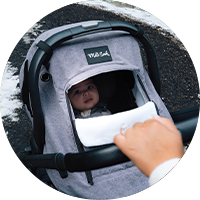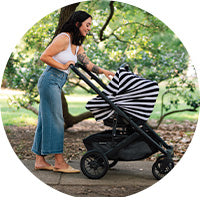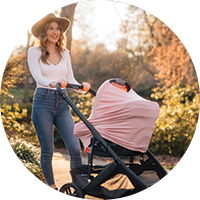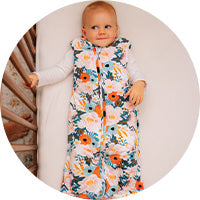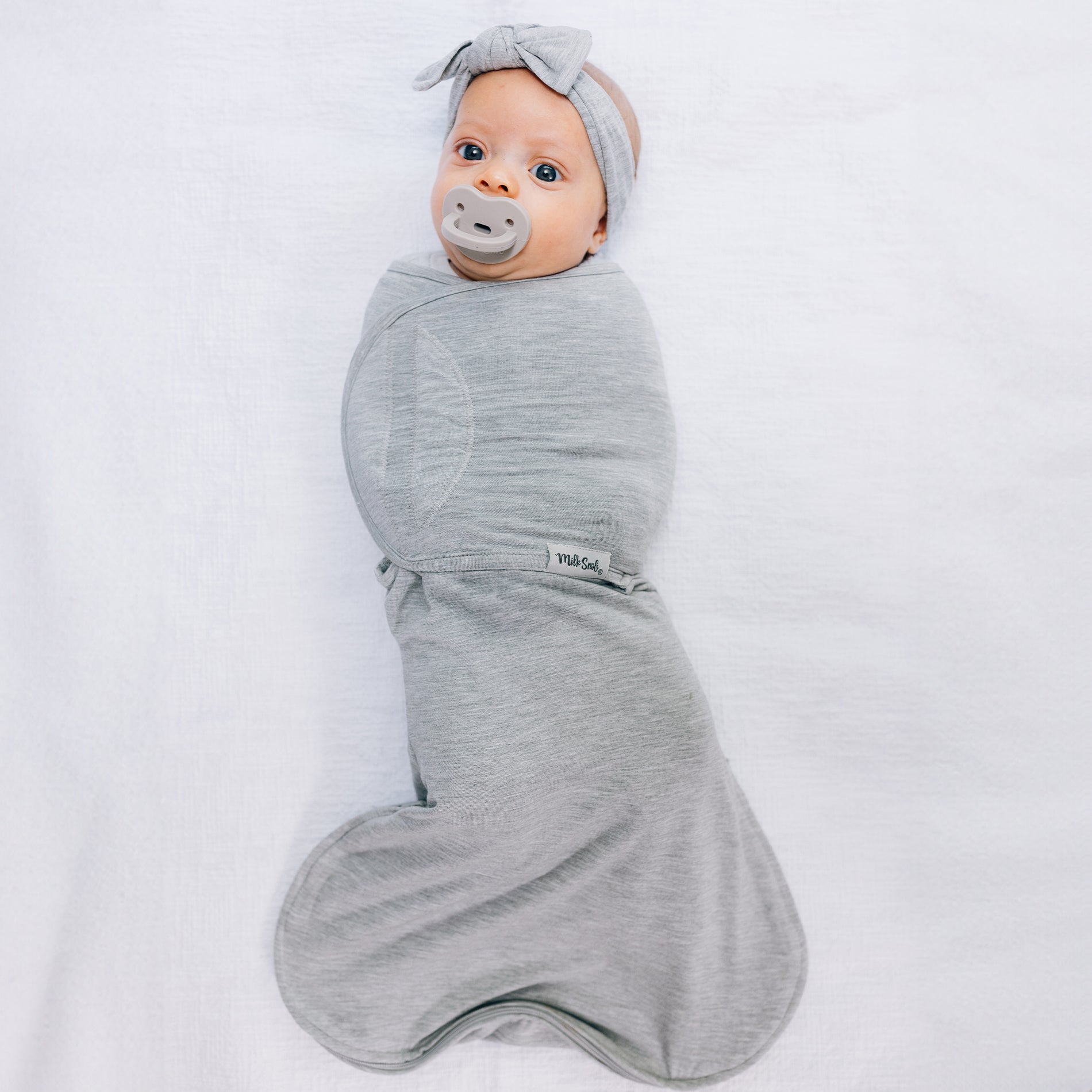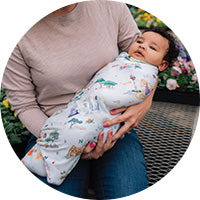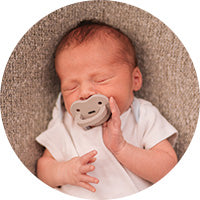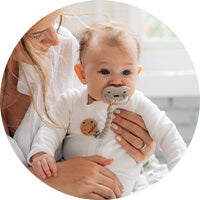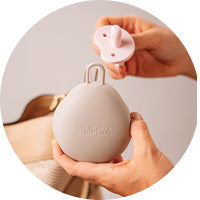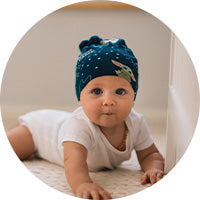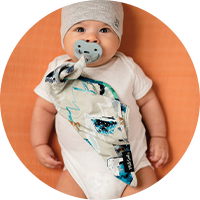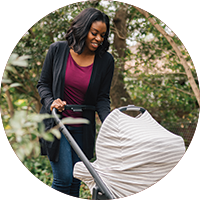Transitioning from Swaddles to Sleep Sacks: Tips for a Smooth Change for Your Baby's Sleep Routine
Swaddling is often a go-to for many parents during the first few months of a newborn’s life. The snugness mimics the comforting security of the womb and helps prevent the startle reflex from waking the baby. However, as babies grow and become more mobile, it becomes essential to transition from swaddles to sleep sacks. This change is critical for the baby’s safety, development, and long-term sleep patterns. But how do you make this shift without disrupting your baby’s sleep routine? In this article, we'll explore transitioning from swaddles to sleep sacks and offer tips to ensure a smooth transition for you and your baby.
Why Transition from Swaddles to Sleep Sacks?
As babies grow, the need for swaddling diminishes, especially as they develop the ability to roll over. Swaddling a baby who can roll increases the risk of suffocation or Sudden Infant Death Syndrome (SIDS), as the baby may get stuck on their tummy without the ability to use their arms to push up. At this point, transitioning to a sleep sack, also known as a wearable blanket, is a safer and more practical solution.
Sleep sacks offer the baby warmth and comfort while allowing for free arm movement, reducing the risk of the baby becoming trapped in an unsafe position. Sleep sacks also serve as a good long-term solution because they can be used well into toddlerhood, providing a sense of security while keeping your baby warm without the need for loose blankets.
When Should You Transition to a Sleep Sack?
Most pediatricians recommend transitioning from swaddles to sleep sacks when your baby shows signs of increased mobility, typically around 3 months of age. Specifically, if your baby begins to roll over, it’s time to stop swaddling immediately.
Tips for a Smooth Transition from Swaddles to Sleep Sacks
1. Start with a Partial Transition
One way to ease the transition is by first swaddling with one arm out. This way, your baby can still enjoy the snugness of the swaddle blanket while getting used to having one arm free. After a few nights, you can gradually free the other arm. This gradual approach can help your baby adjust to the new sleep environment without feeling overwhelmed.
2. Introduce the Sleep Sack During Naptime
Begin by using the sleep sack during daytime naps. This helps your baby become familiar with the new sleepwear in a more controlled and shorter time frame. Naps are also typically less disrupted by changes, making them a great time to experiment with new sleep tools. Once your baby is comfortable using a sleep sack for naps, it will be easier to introduce it during nighttime sleep.
3. Choose the Right Sleep Sack
When transitioning from a swaddle, it’s crucial to choose a sleep sack that is appropriate for your baby’s age, weight, and size. Sleep sacks come in different sizes and TOGs to suit different seasons and temperatures. Look for one that provides a snug fit around the chest while giving enough room for the baby to kick their legs. If you’re transitioning from a swaddle, some sleep sacks come with removable sleeves or adjustable designs that allow for a gradual transition.
4. Maintain a Consistent Bedtime Routine
Consistency is key when making any changes to your baby’s sleep routine. Stick to your usual bedtime routine, whether it includes a bath, lullabies, or storytime. This will help your baby feel more secure and comforted by the familiarity, even as you introduce the sleep sack. The continuity of the bedtime routine signals to your baby that it’s time for sleep, helping them adapt to the new sleepwear without much resistance.
5. Monitor Your Baby’s Comfort
During the transition period, keep a close eye on your baby’s comfort levels. Ensure that the room temperature is appropriate for the sleep sack you’re using. If your baby seems too warm or too cold, it may disrupt their sleep. Sleep sacks come in different TOG ratings, which indicate their thermal resistance and help you choose one that suits the temperature of your baby’s sleep environment.
6. Stay Patient and Flexible
It’s important to remember that every baby adjusts at their own pace. Some babies may take to the sleep sacks for infants immediately, while others may need a few days or even weeks to fully adapt. Stay patient and flexible during this transition, and don’t be discouraged if your baby takes a little longer to get used to the sleep sack. With time, they will adjust to the new routine.
Benefits of Using Sleep Sacks for Your Baby’s Sleep
1. Promotes Safe Sleep
Sleep sacks eliminate the need for loose blankets in the crib, reducing the risk of suffocation and SIDS. They also provide a secure and cozy environment that helps babies feel safe and comfortable, without restricting their movement. This ensures that even if the baby rolls over in the night, they can move their arms and adjust themselves safely.
2. Improves Sleep Quality
Many parents find that their babies sleep better in a sleep sack because it maintains a consistent level of warmth and comfort throughout the night. The breathable fabric of sleep sacks helps regulate temperature, preventing the baby from getting too hot or too cold, which can lead to nighttime awakenings.
3. Supports Long-Term Sleep Independence
As your baby grows, using a sleep sack can foster long-term sleep independence. Babies learn to associate the sleep sack with bedtime, which can make the sleep process smoother even during travel or in unfamiliar environments. It becomes a comforting sleep cue, helping the baby settle more easily and fostering healthy sleep habits into toddlerhood.
Conclusion
Transitioning from swaddles to sleep sacks is a natural and important step in your baby’s sleep development. It not only promotes safe sleep practices but also encourages better, uninterrupted sleep. By following a gradual transition process and being mindful of your baby’s comfort, you can help make this change a smooth and positive experience for your little one. Remember that consistency, patience, and the right sleep sack are the keys to ensuring a successful transition while maintaining your baby’s restful sleep routine.





